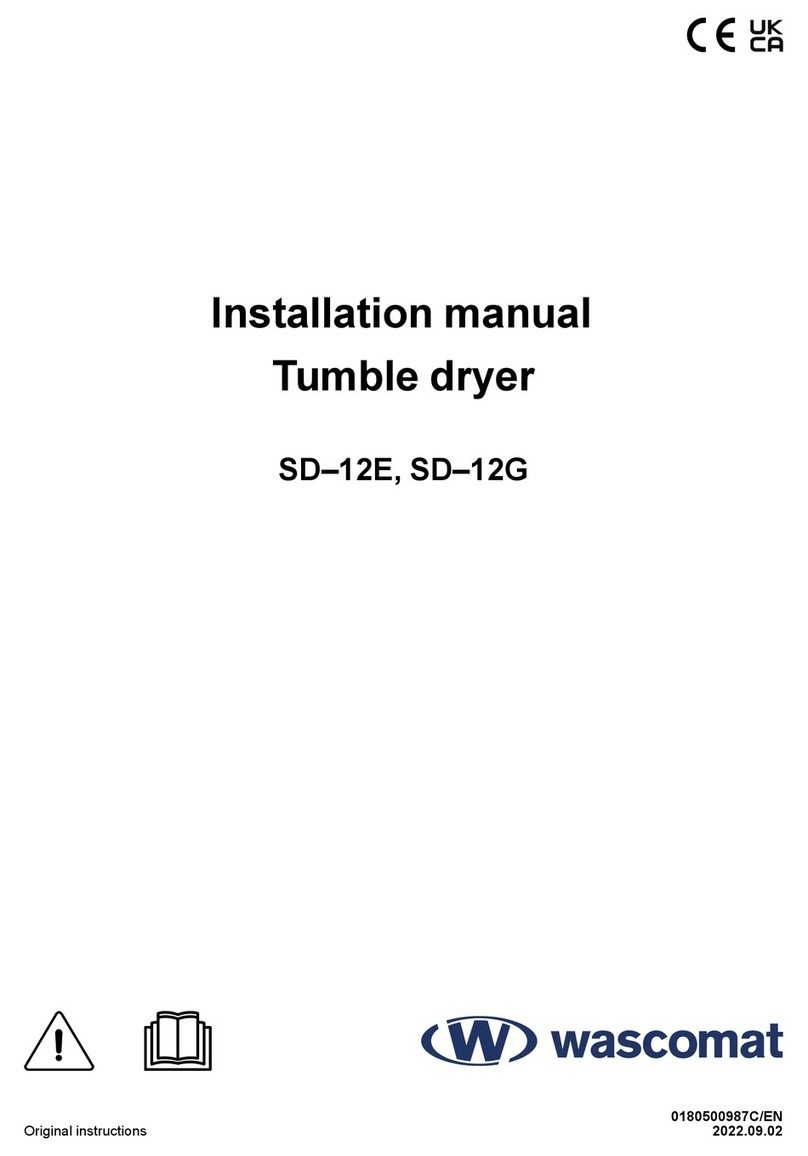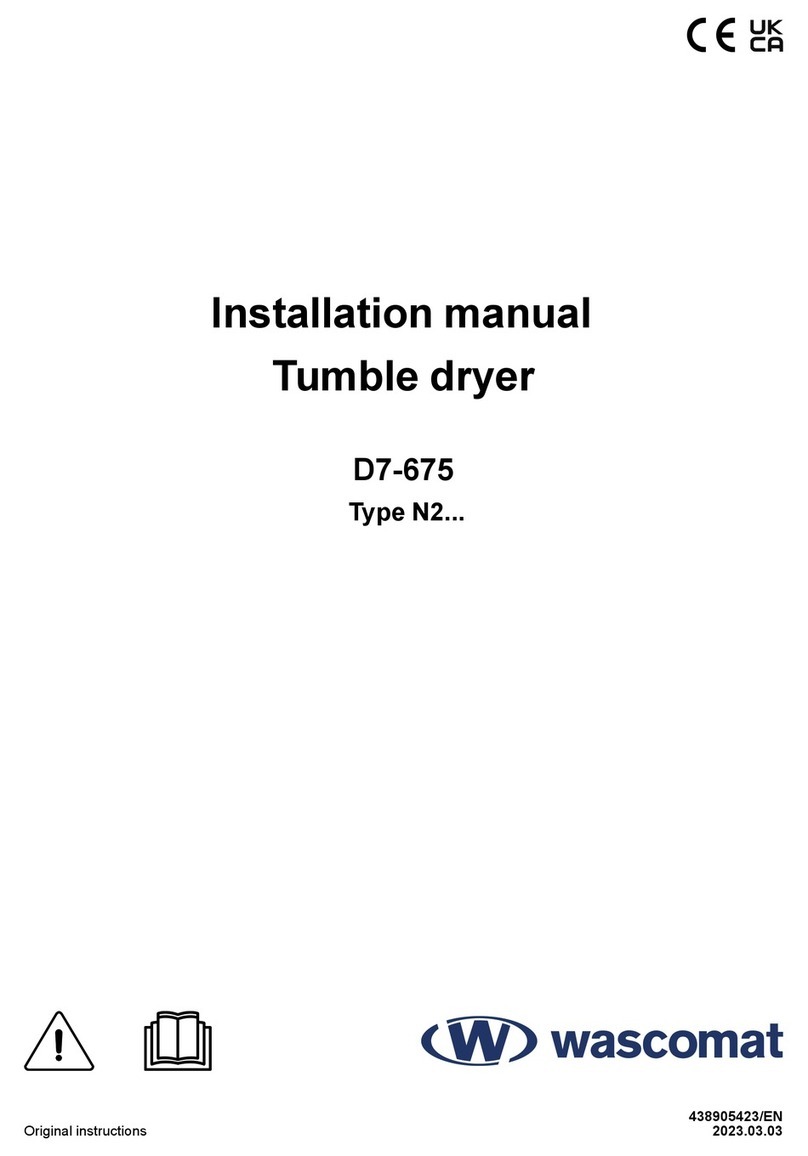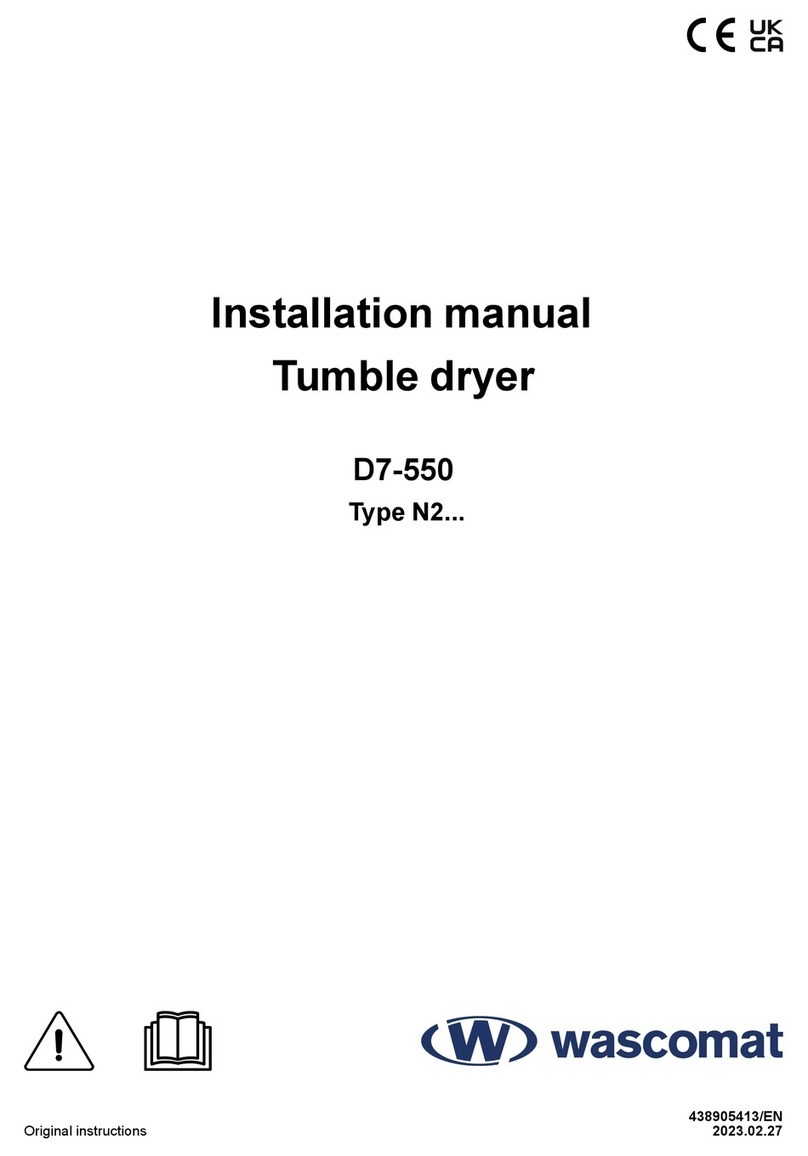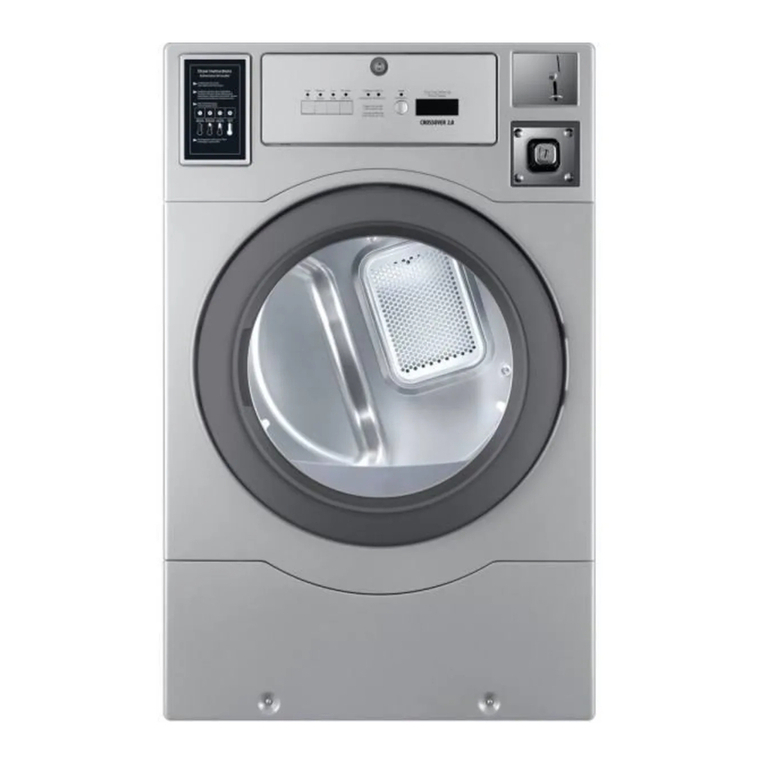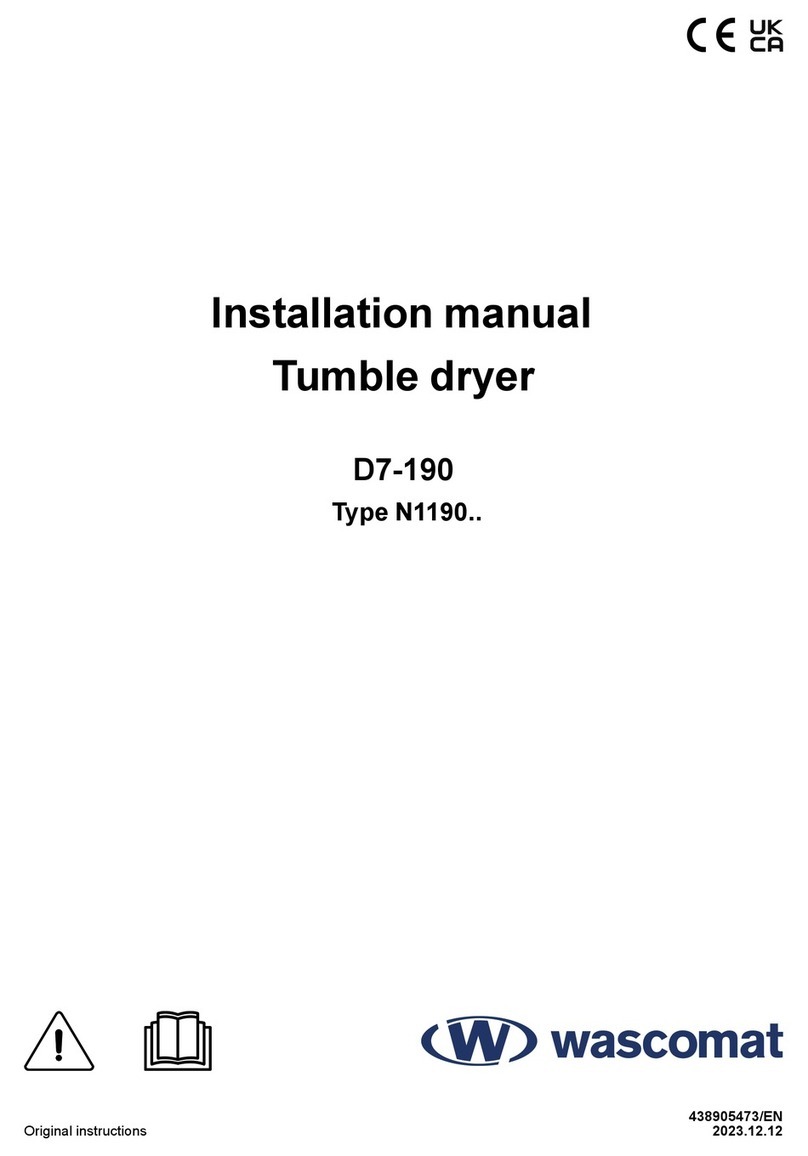
Contents
Contents
1 Safety Precautions ..............................................................................................................................5
1.1 Additional safety precautions for gas heated tumble dryer .............................................................7
1.2 General safety information..........................................................................................................7
1.3 Commercial use only..................................................................................................................7
1.4 Copyright ..................................................................................................................................7
1.5 Symbols....................................................................................................................................7
2 Technical data.....................................................................................................................................8
2.1 Drawing ....................................................................................................................................8
2.2 Technical data ...........................................................................................................................9
2.3 Connections ..............................................................................................................................9
3 Setup ...............................................................................................................................................10
3.1 Unpacking...............................................................................................................................10
3.2 Recycling instruction for packaging ........................................................................................... 11
3.3 Siting ......................................................................................................................................12
3.4 Mechanical installation .............................................................................................................12
3.4.1 Securing the machine .....................................................................................................13
4 Marine installation .............................................................................................................................14
5 Reversing the door ............................................................................................................................15
6 Evacuation system ............................................................................................................................18
6.1 Air principle .............................................................................................................................18
6.2 Fresh air..................................................................................................................................19
6.3 Exhaust duct ...........................................................................................................................19
6.4 Shared exhaust duct ................................................................................................................20
6.5 Exhaust dimensioning ..............................................................................................................20
6.6 Adjusting the dryer...................................................................................................................21
7 Steam connection .............................................................................................................................23
7.1 Connecting the steam ..............................................................................................................23
7.2 Steam calorifier........................................................................................................................24
8 Gas connection .................................................................................................................................25
8.1 Fasten the label .......................................................................................................................25
8.2 General...................................................................................................................................25
8.3 Gas installation........................................................................................................................26
8.4 Table of pressure and adjustment..............................................................................................27
8.5 Test run...................................................................................................................................28
8.6 Converting instructions.............................................................................................................28
8.7 Data label................................................................................................................................30
9 Electrical connection..........................................................................................................................31
9.1 Electrical installation ................................................................................................................31
9.2 Single-phase connection ..........................................................................................................31
9.3 Three-phase connection...........................................................................................................32
9.4 Electrical connections ..............................................................................................................33
9.5 Functions for I/O-cards.............................................................................................................34
9.5.1 Central payment (2J) ......................................................................................................34
9.5.2 Central payment (2J) ......................................................................................................35
9.5.3 External coin meter/Central payment (2K) ........................................................................36
9.5.4 Price reduction (2K)........................................................................................................37
9.6 Option.....................................................................................................................................37
9.6.1 External connection 100 mA............................................................................................37
10 At first power up ................................................................................................................................38
10.1 Select language.......................................................................................................................38
10.2 Set time and date.....................................................................................................................38
10.3 Activate/Deactivate the service alarm ........................................................................................38
11 Function check..................................................................................................................................39
12 Disposal information..........................................................................................................................41
12.1 Disposal of appliance at end of life ............................................................................................41
12.2 Disposal of packing..................................................................................................................41
The manufacturer reserves the right to make changes to design and component specifications.
